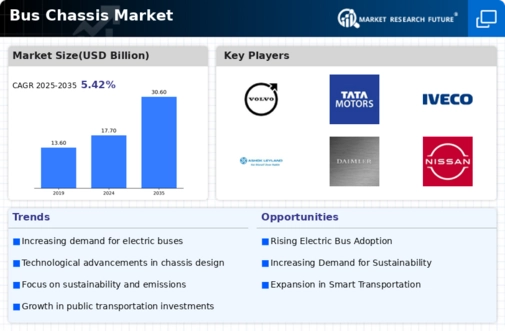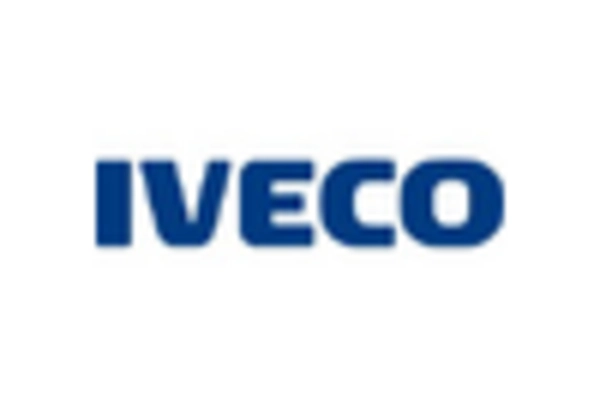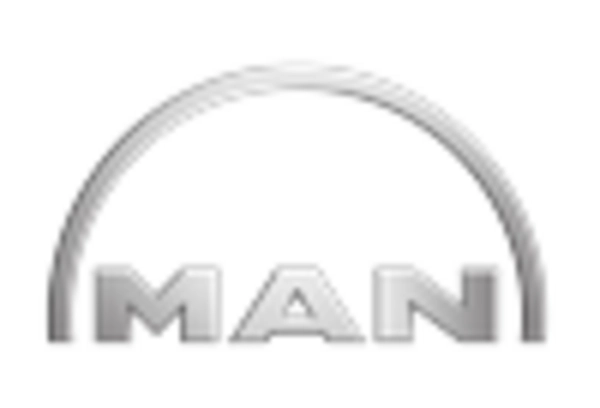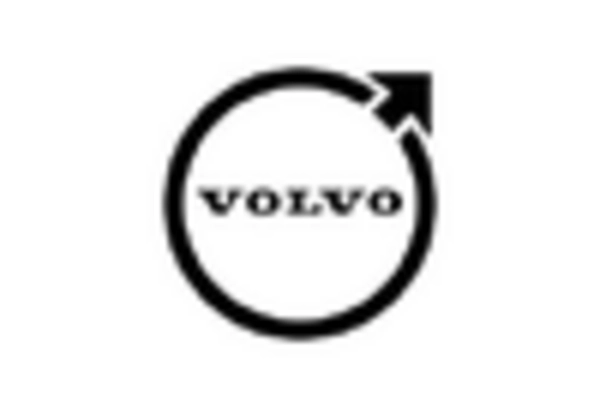Increasing Urbanization
The trend of increasing urbanization appears to be a significant driver for the Bus Chassis Market. As more people migrate to urban areas, the demand for public transportation solutions rises. This shift necessitates the development of efficient bus systems, which in turn drives the need for advanced bus chassis. According to recent data, urban areas are expected to house approximately 68% of the world's population by 2050. This demographic shift suggests that municipalities will likely invest heavily in public transport infrastructure, including bus chassis, to accommodate growing populations. Consequently, manufacturers in the Bus Chassis Market may find opportunities to innovate and expand their offerings to meet the evolving needs of urban transit systems.
Technological Advancements
Technological advancements are transforming the Bus Chassis Market in profound ways. Innovations such as lightweight materials, advanced safety features, and smart technologies are becoming increasingly prevalent. The integration of telematics and connectivity solutions into bus chassis is enhancing operational efficiency and passenger experience. Market data suggests that the adoption of smart technologies in public transport is expected to increase, with a projected market size of over 30 billion dollars by 2026. This trend indicates that manufacturers who invest in research and development to incorporate cutting-edge technologies into their bus chassis will likely gain a competitive edge. As the industry evolves, the demand for technologically advanced bus chassis is expected to rise, reflecting the changing expectations of transit authorities and passengers alike.
Rising Demand for Public Transport
The rising demand for public transport is a pivotal driver for the Bus Chassis Market. As urban populations swell, the need for efficient and reliable public transportation systems becomes increasingly apparent. This demand is further fueled by the growing awareness of environmental issues and the need to reduce traffic congestion. Recent statistics indicate that public transport ridership has seen a steady increase, with many cities reporting a rise in bus usage. This trend suggests that transit authorities are likely to invest in expanding their fleets, thereby driving the demand for new bus chassis. Consequently, manufacturers in the Bus Chassis Market may find themselves in a favorable position to capitalize on this growing need for public transport solutions.
Government Regulations and Policies
Government regulations and policies play a crucial role in shaping the Bus Chassis Market. Many countries are implementing stricter emissions standards and promoting public transport as a sustainable alternative to private vehicles. For instance, initiatives aimed at reducing carbon footprints are compelling manufacturers to develop eco-friendly bus chassis. Data indicates that the electric bus segment is projected to grow significantly, with an expected compound annual growth rate of over 20% in the coming years. This regulatory environment not only encourages innovation but also creates a competitive landscape where companies must adapt to comply with new standards. As a result, the Bus Chassis Market is likely to witness a surge in demand for compliant and sustainable chassis solutions.
Investment in Infrastructure Development
Investment in infrastructure development is a key driver for the Bus Chassis Market. Governments and private entities are increasingly recognizing the importance of robust public transport systems as a means to enhance urban mobility. Recent reports indicate that infrastructure spending is projected to reach trillions of dollars over the next decade, with a significant portion allocated to public transport projects. This influx of capital is likely to result in the procurement of new bus chassis to support expanded and upgraded transit systems. As cities modernize their transport networks, the demand for innovative and durable bus chassis is expected to rise. Thus, manufacturers who align their production capabilities with these infrastructure initiatives may find substantial opportunities within the Bus Chassis Market.


















Leave a Comment